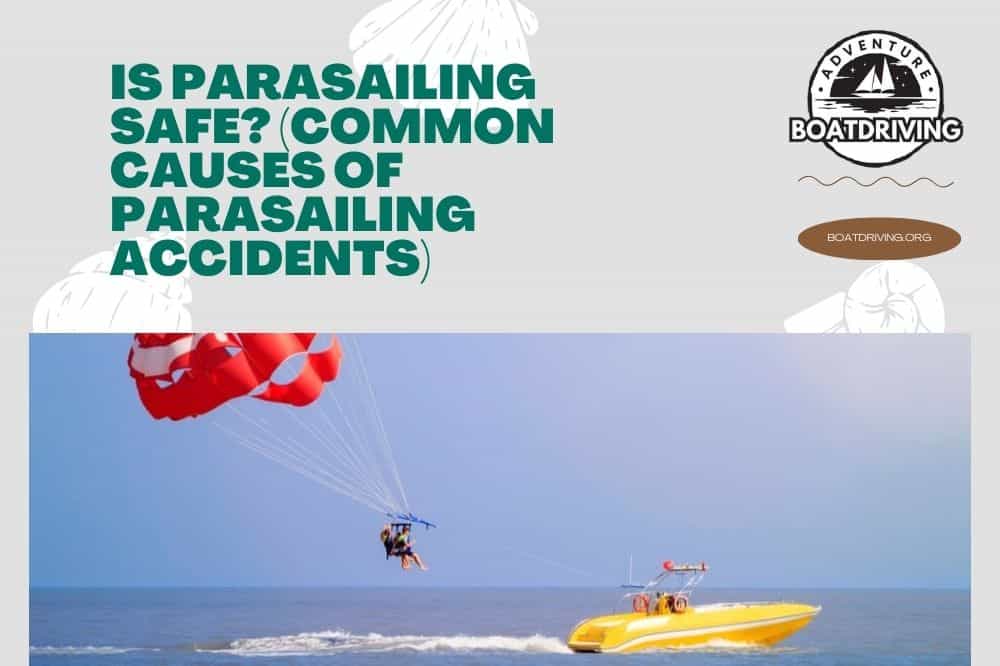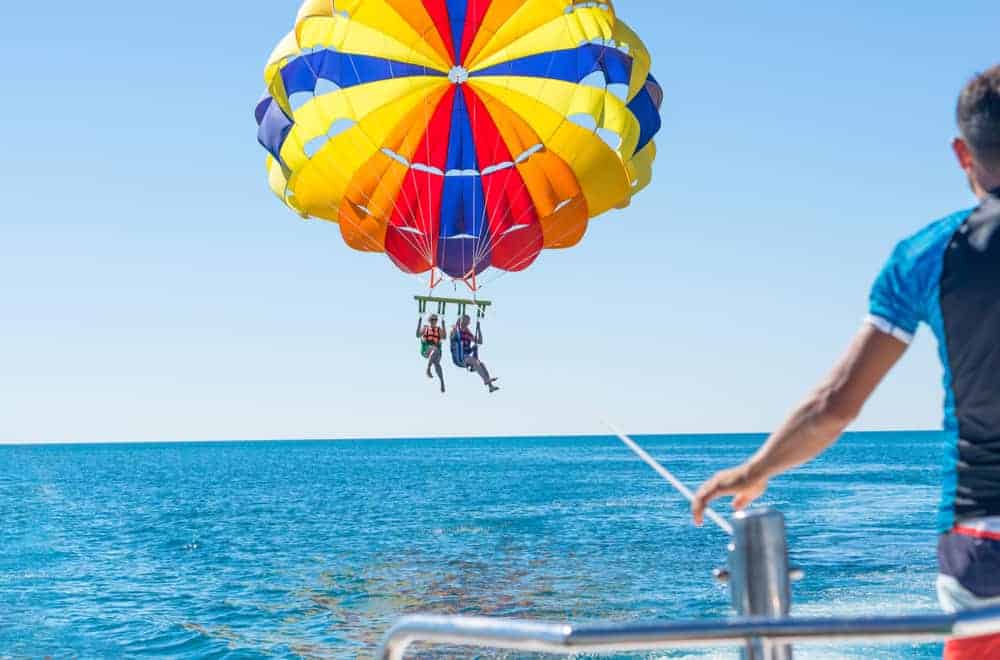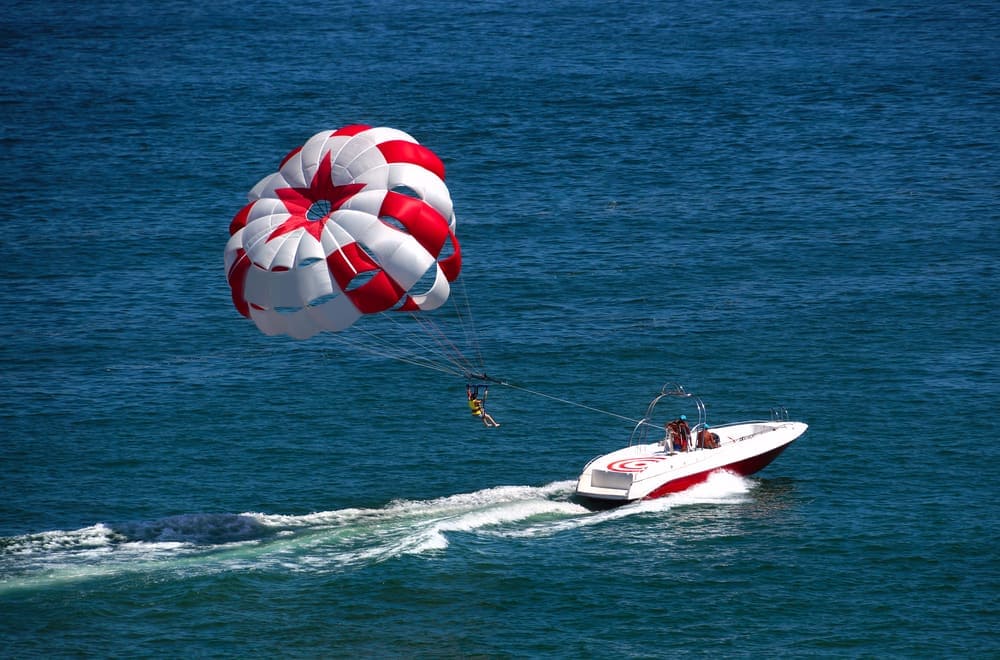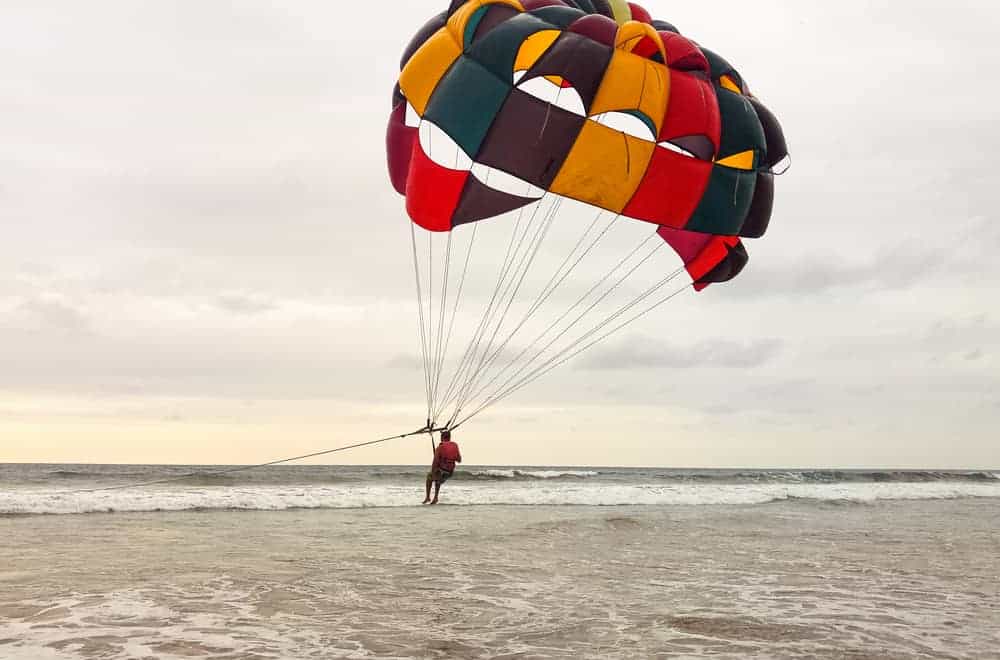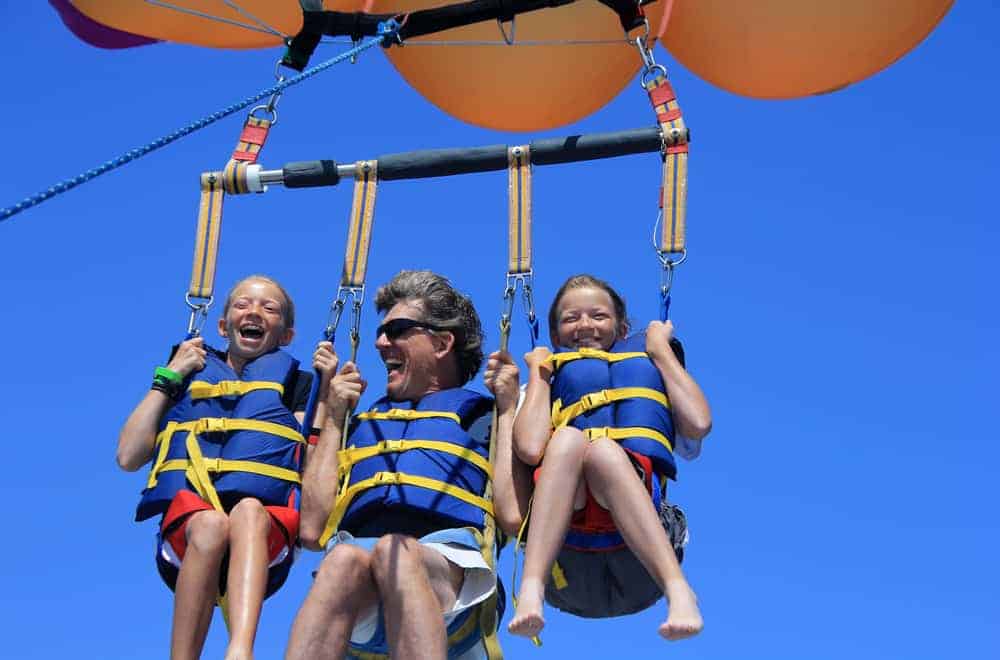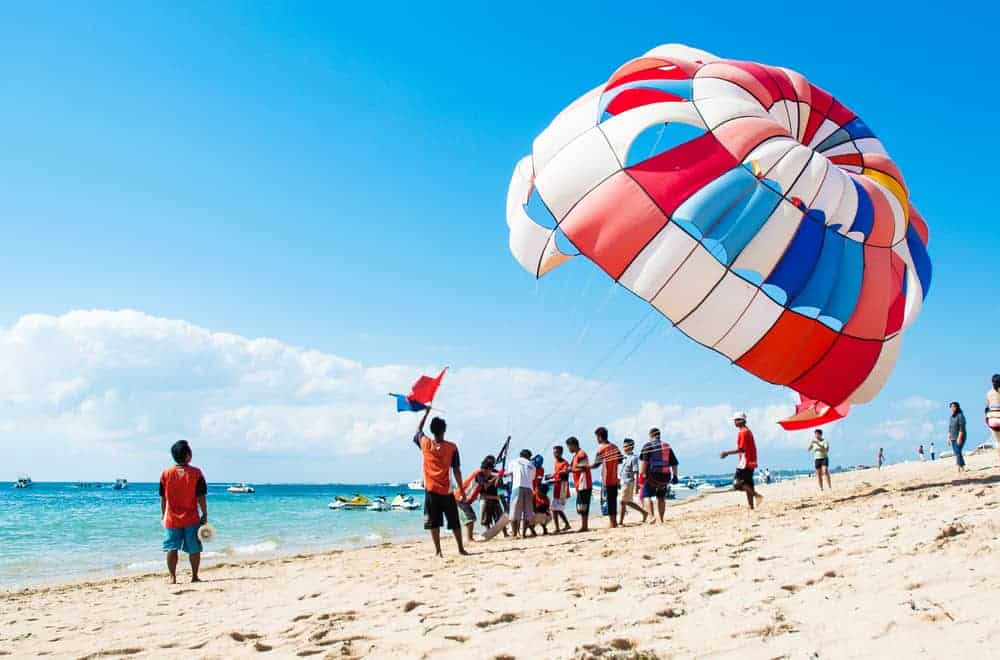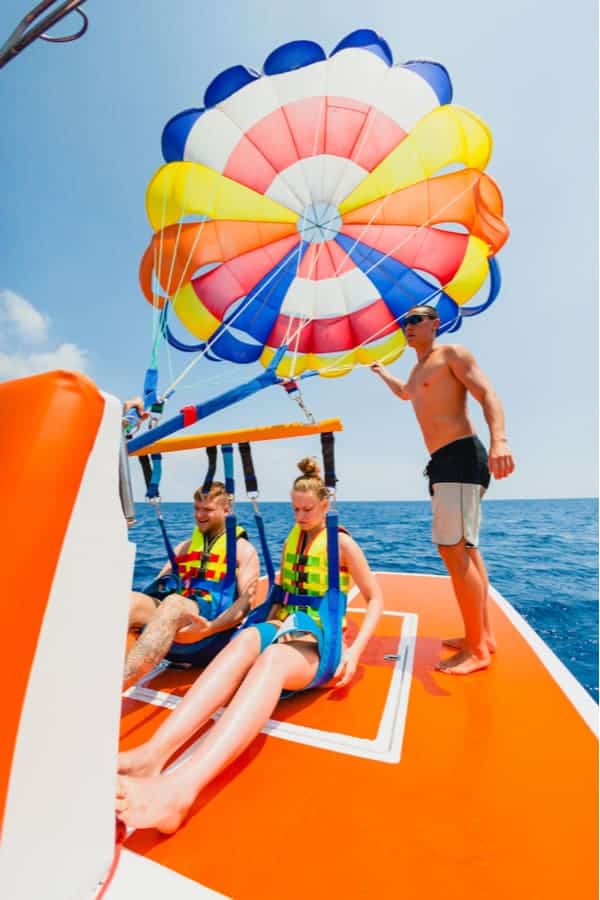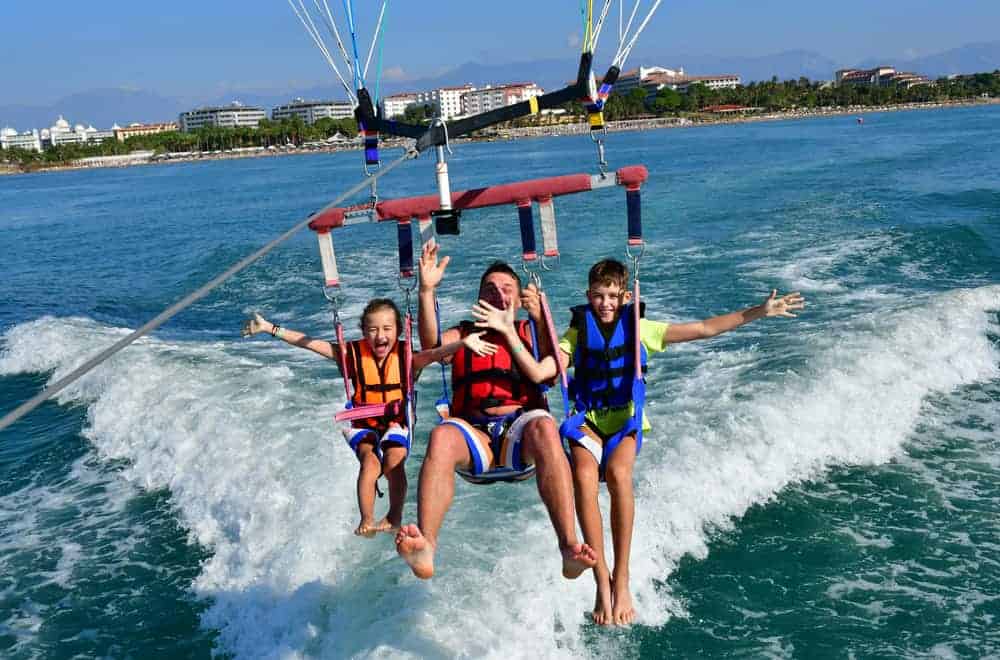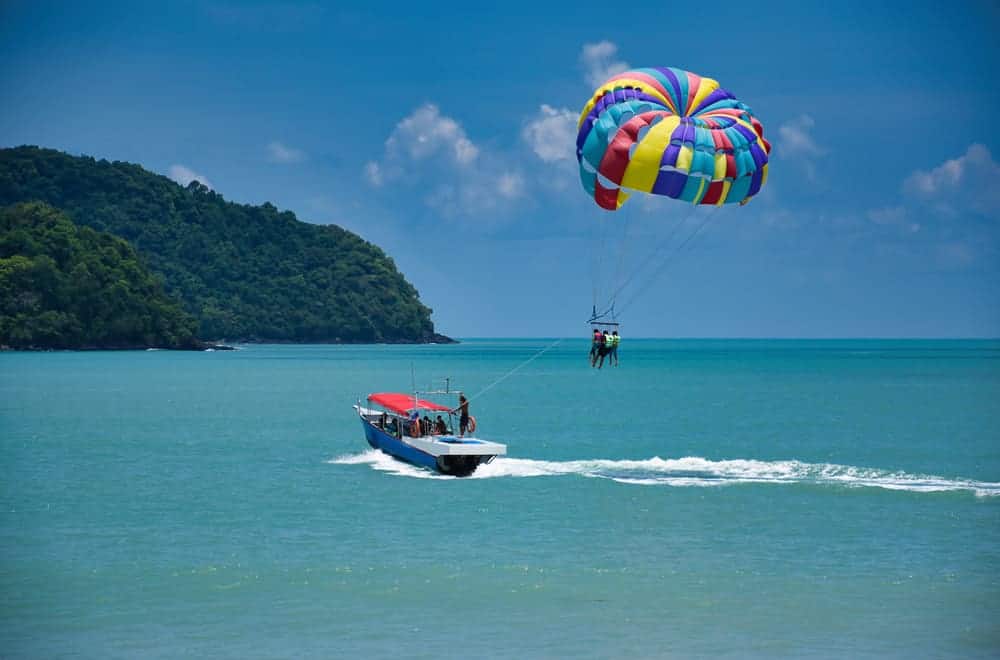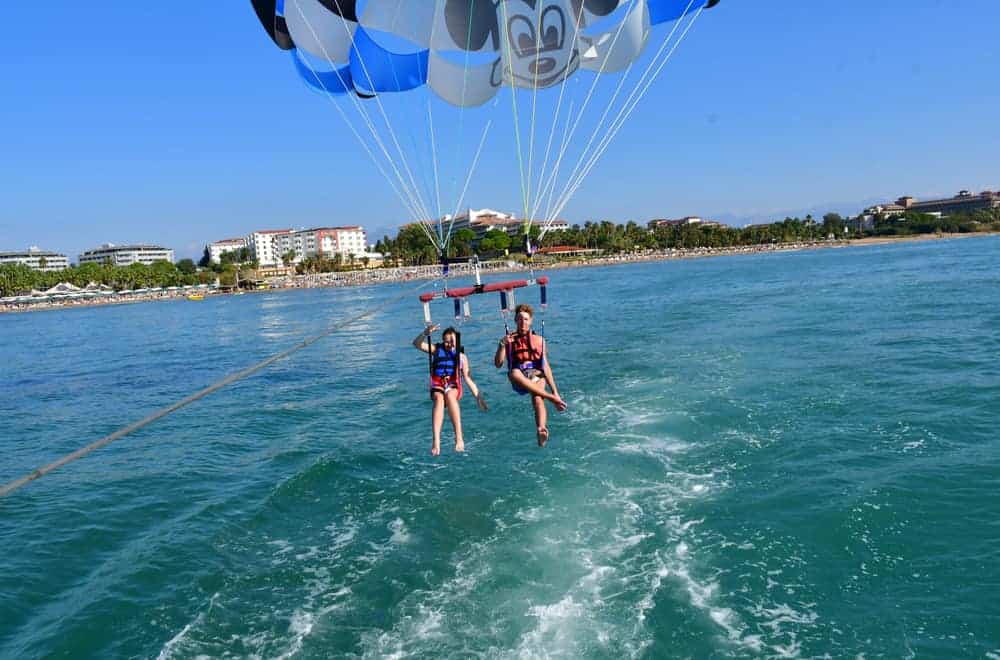Are you considering going out parasailing? If the rush of flying from a boat hundreds of feet in the air seems like fun, you might love parasailing. Still, you wonder: is parasailing safe?
Each year, millions of people engage in this exhilarating summertime activity. Generally, parasailing is safe. According to the Parasail Safety Council, an average of 1800 injuries and fatalities related to parasailing have been recorded in more than 30 years.
Compared to other activities such as skiing, cruising, scuba diving, driving, hiking, biking, and going on a rollercoaster ride, parasailing results in far fewer injuries and fatalities.
That said, like any sporting activity, parasailing has its own risks. You should always observe safety standards to minimize the risk of injuries.
In this article, you will find some tips on safe parasailing to help you enjoy this exciting activity. But, first, we’ll talk a bit about what parasailing entails, common failures, and typical causes of accidents. This isn’t meant to scare you; rather, it will help you know what to do to ensure your safety and that of your loved ones.
So, let’s jump right in.
Table of Contents
How Does Parasailing Work?
During a typical parasailing session, passengers are held up in the air by a canopy or gondola, tied to a tow line and pulled by a winch boat, also known as a parasailing boat.
The passenger is strapped in a harness hanging from a horizontal bar, known as a passenger bar. This bar is suspended below another bar known as a raiser. The raise is hooked with the canopy or parachute using canopy lines.
Operators attach the canopy lines to a tow line connected to the high-performance boat. The other end of the tow line closer to the passengers is a yoke attached to the riser bar. The other end of the tow line on the boat side is attached to a winch operated using a hydraulic mechanism.
While the passengers are hoisted in the air, the boat’s deckhand and skipper control the canopy and keep the passengers safe. The entire activity is supported by aerodynamic mechanisms and the boat’s forward speed, which keeps passengers flying hundreds of feet up in the air.
One concern about parasailing is that the passenger’s safety is entirely in the hands of the equipment and boat operators. Passengers hoisted many feet up in the air have no way of communicating distress. Any changes in the weather conditions or the event of equipment failure, passengers have little power to avert a potential accident.
As mentioned, parasailing is safe. But, several risks exist. Let us look at some of the common causes of parasailing accidents.
Common causes of parasailing accidents
1. Weak towline
The tow line is the primary connection between the passenger canopy and the boat. Any weaknesses along the line can cause the canopy to come down tumbling, injuring the passengers on board. Weak tow lines are caused by natural wear and tear, knotting, and poor maintenance.
2. Boating incidents
Boating accidents unrelated to passengers being aloft can result in parasailing casualties. Examples include boat collisions, which can occur when many boaters are in the water. Sinking, running aground, and fire are potential hazards for parasailing passengers.
3. Mechanical problems
The winch boat may encounter mechanical problems, causing it to stall. If the boat cannot move forward, the crew will have problems keeping the passengers high up in the air.
4. Piloting errors
The winch boat is entirely under the control of the boating crew. Any error in judgement on their part can potentially result in an accident. Possible issues include lacking the skills to operate a high-performance parasailing boat, problems keeping passengers at an appropriate altitude, inability to navigate changes in weather or sea conditions etc. This is why it is important to check the boat operator’s reputation, including their experience with parasailing.
5. Changes in weather condition
While boat operators cannot control changing weather conditions, they should be prepared for such eventualities. Sudden strong winds can change the aerodynamics, making it difficult for passengers to stay aloft.
Some operators used canopies that can stay aloft with few disturbances regardless of the weather conditions. I strongly recommend finding out the type of canopy your parasailing boat operator uses to ensure it can withstand different weather conditions.
6. Canopy failure
Aside from problems with the tow line, another possible issue that may arise is when the canopy spins and the canopy lines become entangled. This can quickly result in altitude loss, causing the canopy to come down tumbling at a rapid speed, potentially injuring the passengers.
7. Harness failure
The harness is an important safety component as part of the parasailing equipment. It is supposed to keep the passenger in their rig and avoid preventable and potentially tragic falls when a passenger is aloft. Unfortunately, several people have been injured over the years, and others had died when their old and worn harnesses tore, leaving them to freefall hundreds of feet from the sky.
The harness is also designed for the passenger to unlock it to free themselves in an emergency. When the boat operator decides to stop suddenly due to dangerously high winds, passengers may need to release themselves from the parasailing equipment to fall into the water safely. But, if the harness fails to unlock, the passengers will be trapped. They could get entangled in the equipment, a scenario that can result in drowning.
These are the most common causes of parasailing accidents. But, as I have mentioned, going by widely available statistics, these incidents are rare, and in most cases, parasailing is safe.
Next, let us take a look at some precautions you can take to keep you and your loved ones safe before setting out for a parasailing excursion.
Tips For Safe Parasailing
Even though parasailing boat operators must keep passengers safe, you should also take responsibility for your own safety.
Below, I recommend a couple of tips for safe parasailing. Keep these in mind on your next parasailing trip.
1. Opt for a reputable operator
Excited as you may be to go on your first parasailing excursion, do not overlook the importance of choosing an operator known for complying with safety standards.
The truth is the parasailing industry is largely unregulated. There are no state or federal laws governing operators or holding them accountable.
What’s more, there is no requirement for operators to Obtain a special parasailing certificate or license aside. As long as the vessel they use to carry passengers is certified to meet the minimum standards, anyone can take passengers out to parasail.
In most states, there are safety standards for such sporting activities. But, it is optional for operators to comply with these standards. Although some operators may voluntarily comply with the standards, others won’t and may likely endanger the lives of passengers.
Take some time to research operators before settling for one. Find out about their track record, what other customers say about them, their industry experience, and whether they’ve been associated with parasailing injuries or deaths.
2. Check the equipment
Faulty equipment has been found to be the leading cause of parasailing accidents. Post-accident investigations by the National Transportation Safety Board show that the equipment used was unsafe in most cases, predisposing passengers to grave harm.
As a passenger, you have the right to check the operator’s equipment before taking off for an excursion. The tow line is the greatest culprit for preventable parasailing incidents. Worn outlines, knots, cyclic loading and overloading, and exposure to the elements are some of the reasons that can make a tow line to be unsafe.
Constant exposure to saltwater and sun can cause tow lines to wear out pretty fast, necessitating regular replacement. Any slight changes in the strength of the wind can quickly break an already worn-out tow line, increasing the risks for unsuspecting passengers.
If the towline doesn’t appear to be in good condition, it is best to look for another operator. Do not proceed to parasail with a dirty, knotted, or worn-out tow line. Good operators who care about their passengers’ safety will change their towline and other equipment and be proud of it.
The truth is, there are no regulations requiring parasailing operators to change and upgrade their equipment regularly. This is entirely left to the operators to voluntarily comply. This is why passengers must take matters into their own hands and inspect parasailing equipment before using them. Ensure that the towline and other paraphernalia you will use are as good as new.
3. Be Mindful of the Weather
A little wind isn’t a problem when parasailing. But, keep in mind that even small changes in the wind strength can be catastrophic if you and the boat operator are unprepared for it.
In some states, parasail operators are prohibited from taking passengers on excursions during high winds. In other states, the decision is left entirely to the operator.
You should not go on excursions when there are signs of an approaching storm or when it is too windy. How do you know if it is too windy to be parasailing? Here’s what I recommend: if you have a hard time setting up a beach umbrella, the winds are too strong, and it isn’t safe to parasail.
A good rule of thumb is to avoid parasailing if the wind strength is consistently 20 mph or more.
4. Ask about the distance you will fly from the shoreline
Flying is a canopy thousands of feet up in the air that seems exciting. But, the reality is you increase your risk of serious injury the further up you fly in a parasailing excursion.
You should be wary of an operator who brags about flying you up thousands of feet high. You should also inquire how far from the shore they will fly you.
The rule of thumb is the operator should adhere to a 3:1 ratio. For example, if the tow line is 300 feet, the winch boat should be no less than 900 feet from the shore. Do not accept an operator who insists on keeping you closer to the short.
Flying too close to the shore exponentially increases your risk of injury. Ideally, parasailing excursions are safest when the tow line is no more than 500 feet. Avoid exceptionally high excursions; the further you are away, the more difficult it is to communicate with the boat.
5. Take a Seat
You can either hang from a harness or sit in a gondola in a parasailing excursion. While hanging from a harness may seem more exciting, the risks for injury are more if the towline breaks or equipment fails.
Say the tow line breaks; if you are hanging from a harness and you end up falling in the water, there is a big risk of entanglement. This can prevent you from swimming, which can potentially lead to drowning. Even if you have a life jacket, there is no guarantee of safety. A safer option is to sit in a gondola. There is less risk of entanglement, as is the case with a harness.
If you opt to parasail in a harness anyway, thoroughly inspect the gear. The harness rig should be in pristine condition. Do not go parasailing on a visibly worn-out or damaged harness.
I also recommend speaking with your operator about their safety plan in case of equipment failure when you are aloft. A good operator should explain your actions in an emergency to mitigate serious injury. Avoid operators who gloss over this part and instead tell you not to worry.
Summary: Is Parasailing Safe?
For someone who hasn’t done it before, parasailing seems exciting and scary. If you are after some adrenaline rush and you love the water, parasailing can be a fun activity to try.
Going by statistics from reputable government and non-governmental agencies, parasailing is safe. Go with a trustworthy operator and follow all safety instructions, and you should have the most fun.
